Jeep Cherokee (XJ): Manual valve shaft seal. Accumulator pistons and springs. Second coast brake servo
REMOVAL
1 - SHAFT SEAL (1) Remove park/neutral position switch and disconnect
transmission shift lever (Fig. 74).
(2) Remove oil pan and valve body.
(3) Remove bolts attaching park rod bracket to
case (Fig. 75).
1 - PARK ROD
1 - SHIFT SECTOR (5) Cut spacer sleeve with chisel and remove it
from manual valve shaft (Fig. 77).
(6) Remove pin from shaft and sector with pin
punch.
(7) Remove shaft and sector from case.
1 - SPACER (8) Pry shaft seals out of case (Fig. 78).
1 - MANUAL VALVE SHAFT SEAL INSTALLATION (1) Inspect the manual valve shaft and sector.
Replace either component if worn or damaged.
(2) Coat replacement shaft seals with petroleum
jelly and seat them in the case using an appropriately
sized driver/socket (Fig. 79).
1 - SHAFT SEAL INSTALLER (3) Install new spacer sleeve on sector (Fig. 80).
1 - SHIFT SECTOR (4) Lubricate manual valve shaft with petroleum
jelly and install it through the left side of the transmission
case. (5) Lubricate sector and sleeve with petroleum
jelly and install them on shaft.
(6) Install the manual valve shaft through the
remainder of the transmission case.
(7) Align hole in spacer sleeve with notch in sector.
Then install shift sector roll pin. Tap pin into sector and
shaft and securely stake sleeve to sector and shaft.
(8) Connect park rod to sector (Fig. 76).
(9) Install park rod bracket (Fig. 81). Tighten
bracket bolts to 10 N·m (7 ft. lbs.) torque.
1 - PARK ROD BRACKET (10) Install valve body, oil screen and oil pan.
(11) Install park/neutral position switch. REMOVAL (1) Remove valve body.
(2) Remove accumulator pistons with compressed
air (Fig. 82). Apply air through small feed hole next
to each piston bore. Catch each piston in a shop
towel as it exits bore.
CAUTION: Use only enough air pressure to ease each
piston out of the bore. In addition, remove the pistons
one at a time and tag the pistons and springs for
assembly reference. Do not intermix them.
(3) Remove and discard piston O-ring seals. Then
clean pistons and springs with solvent. INSTALLATION (1) Inspect pistons, springs and piston bores.
Replace worn damaged pistons. Replace broken, collapsed
or distorted springs. Replace case if piston
bores are damaged.
1 - AIR GUN NOZZEL IN FEED HOLE (2) If small cushion spring in any piston must be
replaced, remove spring retainer clip and remove
spring from piston (Fig. 83). A small hooked tool or
small thin blade screwdriver can be used to remove
clip. A thin wall, deep socket, or pin punch can be
used to seat clip after spring replacement.
1 - ACCUMULATOR PISTON (TYPICAL) (3) Install new O-ring seals on pistons. Lubricate
seals and pistons and piston bores with transmission
fluid.
(4) Install pistons and springs (Fig. 84).
(5) Install valve body, oil screen and oil pan. REMOVAL (1) Remove valve body.
(2) Remove servo piston cover snap ring with snap
ring pliers (Fig. 85).
(3) Remove servo piston and cover with compressed
air. Apply compressed air through oil hole in
servo boss to ease piston out of bore (Fig. 86).
1 - SERVO PISTON COVER SNAP RING
1 - PISTON AND COVER (4) Remove and discard seal and O-rings from
cover and piston (Fig. 87). Inspect E-ring, piston,
spring and retainer, piston rod and piston spring.
Replace worn or damaged parts.
Fig. 87 Second Coast Brake Servo Components 1 - SERVO PISTON INSTALLATION (1) Install new seals on cover and piston.
(2) Lubricate servo components with transmission
fluid.
(3) Assemble and install servo components in case.
Be sure servo piston rod is properly engaged in the
second coast brake band.
(4) Compress cover and piston and install cover
snap ring.
(5) Install valve body, oil screen and oil pan.Manual valve shaft seal

Fig. 74 Manual Valve Shaft And Seals
2 - PIN
3 - MANUAL VALVE SHAFT
4 - SHAFT SEAL
5 - SPACER SLEEVE
6 - SHIFT SECTOR
Fig. 75 Removing/Installing Park Rod Bracket
2 - PARK ROD BRACKET
Fig. 76 Removing/Installing Park Rod
2 - MANUAL VALVE SHAFT
3 - PARK ROD
Fig. 77 Cutting Spacer Sleeve
2 - MANUAL VALVE SHAFT
Fig. 78 Removing Manual Valve Shaft Seals
Fig. 79 Installing Manual Valve Shaft Seals
Fig. 80 Installing Spacer Sleeve On Sector
2 - SPACER SLEEVE
Fig. 81 Installing Park Rod BracketAccumulator pistons and springs

Fig. 82 Accumulator Piston Removal
2 - PISTONS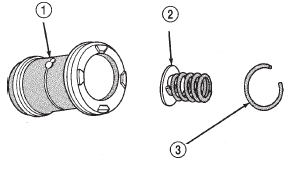
Fig. 83 Small Cushion Spring Retention
2 - SMALL CUSHION SPRING
3 - RETAINER CLIP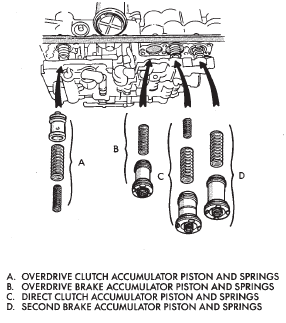
Fig. 84 Accumulator Pistons, Springs And SpacersSecond coast brake servo
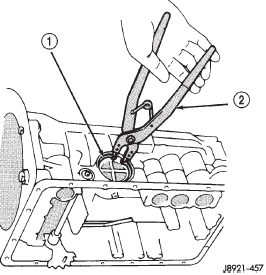
Fig. 85 Removing/Installing Servo Piston Cover Snap Ring
2 - SNAP RING PLIERS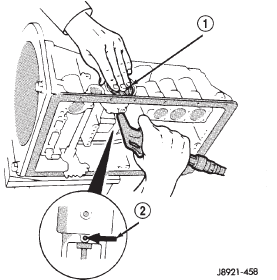
Fig. 86 Removing Servo Cover And Piston
2 - OIL HOLE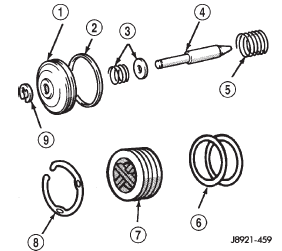
2 - SEAL RING
3 - SPRING AND RETAINER
4 - PISTON ROD
5 - PISTON SPRING
6 - SERVO COVER O-RINGS
7 - SERVO COVER
8 - SNAP RING
9 - E-RING
 Transmission valve body. Transmission control module. Solenoid harness adapter seal
Transmission valve body. Transmission control module. Solenoid harness adapter seal
 Park rod and pawl. Transmission throttle cable. Oil pump seal
Park rod and pawl. Transmission throttle cable. Oil pump seal
Other materials:
Diagnosis and testing
Water leaks
Water leaks can be caused by poor sealing,
improper body component alignment, body seam
porosity, missing plugs, or blocked drain holes. Centrifugal
and gravitational force can cause water to
drip from a location away from the actual leak point,
making leak detection difficult. All ...
